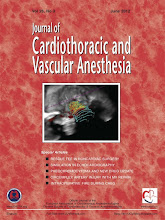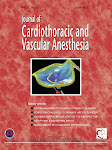Rheumatic Mitral and Aortic Stenosis: To Replace or Not To Replace—That Is the Question—Part 2
Melanie Darke, MD, John Pawloski, MD, Kamal R. Khabbaz, MD, and Feroze Mahmood, MD
INTRAOPERATIVE CHALLENGE (VIDEOS 1 AND 2)
1. Assessment of the severity of aortic stenosis (AS).
2. The impact of concomitant mitral stenosis (MS) on the echocardiographic assessment of AS is debatable.1-3
7. Furthermore, there is not a cutoff value of the absolute AVA that is an indication for AVR.6 The need for AVR is determined by the presence of symptoms of ventricular decompensation rather than the AVA.6
8. The patient’s body surface area was 1.6 m2, with an aortic annular size of 1.8 cm, raising the possibility of a patient prosthesis mismatch after a size 19 prosthetic valve.7
9. The increased likelihood of a patient prosthesis mismatch in concomitant AVR during surgery for rheumatic stenosis of the mitral valve has been reported. This may be because of the greater preponderance of rheumatic heart disease in females who have a smaller body surface area, ascending aorta, and aortic annulus.8,9
INTRAOPERATIVE COURSE
1. Mitral valve replacement only.
2. Aortic valve was considered mildly stenotic and not calcified with the hope of eventual improvement of AVA with improved stroke volume.
3. Immediate post–cardiopulmonary bypass AVA was measured to be 1.27 cm2 (continuity equation) and a peak gradient of 27 mmHg.
4. The pre–cardiopulmonary bypass AVA was 1.07 cm2 via the continuity equation with a peak gradient of 16 mmHg. There was a marginal improvement in the AVA but a simultaneous increase in the peak gradient with similar hemodynamics.
5. Improvement in the final AVA and gradient did not specifically meet the criteria for the diagnosis of AS or “pseudo-AS.” 10
UNANSWERED QUESTIONS
1. Was it really “pseudo-AS” (ie, did the AVA actually significantly improve after the mitral valve replacement)?
2. Was it more significant AS than anticipated (ie, the AS in AVA, but a simultaneous improvement in peak was more severe than measured because of low flow, gradient)? and this is manifested as an insignificant improvement.
3. Should the aortic valve have been replaced?
REFERENCES
1. Honey M: Clinical and haemodynamic observations on combined mitral and aortic stenosis. Br Heart J 23:545-555, 1961
2. Katznelson G, Jreissaty RM, Levinson GE, et al: Combined aortic and mitral stenosis. A clinical and physiological study. Am J Med
29:242-256, 1960
3. Zitnik RS, Piemme TE, Messer RJ, et al: The masking of aortic stenosis by mitral stenosis. Am Heart J 69:22-30, 1965
4. Vaturi M, Porter A, Adler Y, et al: The natural history of aortic valve disease after mitral valve surgery. J Am Coll Cardiol 33:2003-2008, 1999
5. Choudhary SK, Talwar S, Juneja R, et al: Fate of mild aortic valve disease after mitral valve intervention. J Thorac Cardiovasc Surg 122:583-586, 2001
6. ACC/AHA guidelines for the management of patients with valvularheart disease. A report of the American College of Cardiology/American Heart Association. Task Force on Practice Guidelines (Committee on Management of Patients with Valvular Heart Disease). J Am Coll Cardiol 32:1486-1588, 1998
7. Pibarot P, Dumesnil JG: Prosthesis-patient mismatch: Definition,clinical impact, and prevention. Heart 92:1022-1029, 2006
8. Roberts WC, Ko JM: Some observations on mitral and aortic valve disease. Proc (Bayl Univ Med Cent) 21:282-299, 2008
9. Roberts WC, Ko JM, Schumacher JR, et al: Combined mitral and aortic stenosis of rheumatic origin with double-valve replacement in an octogenarian. Int J Cardiol 2008 [Epub ahead of print]
10.Maslow AD, Mahmood F, Poppas A, et al: Intraoperative dobutamine stress echocardiography to assess aortic valve stenosis. J Cardiothorac Vasc Anesth 20:862-866, 2006

